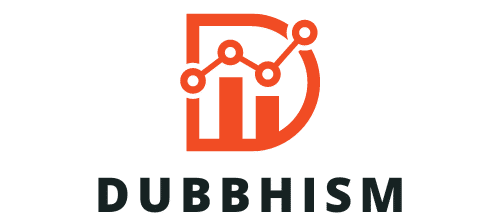The drone market has witnessed a significant evolution in recent years. The rise of unmanned aerial vehicles (UAVs) has led to a surge in the need for advanced drone propulsion systems. The propulsion system is the heart of a drone, determining the flight range, speed, and performance. As we continue to push technological boundaries, the focus has shifted towards more efficient and intelligent propulsion systems, which are the key to unlocking the full potential of UAVs. In this article, we will explore the latest innovations in drone propulsion systems.
The Fundamentals of UAV Propulsion Systems
The propulsion system of a drone consists of components that generate thrust, enabling the drone to fly. The engine, being the primary source of power, is a critical component of this system. This section provides a brief overview of the types of propulsion systems used in drones.
Lire également : How Can Drones Assist in Personal Search and Rescue Operations?
Propulsion systems can be broadly categorized into four main types: electric, internal combustion, hybrid, and gas turbine. Electric propulsion systems are the most common in commercial drones due to their simplicity, reliability, and cost-effectiveness. However, they have a limited flight range due to battery constraints.
Internal combustion engines are typically used in larger, military-grade UAVs. They offer longer flight range but are more complex and expensive. Hybrid systems combine the benefits of electric and combustion engines. They offer extended flight range while maintaining a simple design. Finally, gas turbine engines, used in high-speed drones, offer high power but are costly and complex.
A lire en complément : How Are Personal Drones Contributing to Artistic Expression?
The type of propulsion system selected typically depends on the intended use of the drone. For instance, commercial drones used for photography or delivery services may prefer electric or hybrid systems, while military drones require more complex engines due to their demanding missions.
Emerging Technologies in Drone Propulsion Systems
The continuous advancement in technology has led to several innovations in drone propulsion systems. Let’s explore some of these technologies poised to revolutionize the drone market.
Electric Propulsion Systems
Electric propulsion systems have been a game-changer in the drone market. They have allowed the UAV industry to produce quieter, more efficient, and environmentally friendly drones. However, the flight range of electric drones remains a significant challenge. To address this, companies are working on developing more energy-dense batteries and more efficient electric motors.
One promising innovation is the use of lithium-sulfur batteries. These batteries offer a significantly higher energy density compared to traditional lithium-ion batteries, potentially extending the flight range of electric drones. Furthermore, engineers are exploring the use of brushless DC motors, which are more efficient and reliable than their brushed counterparts.
Hybrid Propulsion Systems
Hybrid propulsion systems are gaining traction due to their potential to combine the benefits of electric and combustion engines. Companies are developing systems that use a combustion engine to charge the drone’s batteries, significantly extending the flight range. Such a setup also reduces the complexity associated with fully combustion engines, making hybrid systems a compelling option for commercial and military drones.
Biofuel Propulsion Systems
In the quest for sustainability, researchers are investigating the use of biofuels in drone propulsion systems. Biofuels, derived from organic materials, offer a renewable energy source that could potentially reduce the carbon footprint of drones. While still in the early stages of development, biofuel propulsion systems hold promise for a more sustainable future for the drone industry.
The Global UAV Propulsion Market
The global UAV propulsion market is expanding at an incredible pace, driven by the increasing use of drones in various sectors. The market is set to be worth several billion dollars by the end of the decade.
The commercial sector is a significant driver for growth, with businesses increasingly adopting drones for various applications, from delivery services to aerial photography. The military sector also represents a significant chunk of the market, with nations around the world investing in UAVs for surveillance, reconnaissance, and combat applications.
The propulsion systems market is highly competitive, with numerous players vying for a slice of the pie. The industry is characterized by constant innovation, with companies continuously developing new technologies to improve the range and performance of drones.
The Future of Drone Propulsion Systems
The future of drone propulsion systems looks highly promising, with several innovative technologies on the horizon. One such technology is hydrogen fuel cells. These systems convert hydrogen into electricity, offering a more sustainable and efficient alternative to traditional combustion engines. They have the potential to provide longer flight times and reduced emissions, making them a highly attractive option for future drones.
Another exciting development is the use of AI in propulsion systems. AI-based systems can optimize drone performance by adjusting the power output based on factors such as altitude, wind speed, and payload. This results in more efficient flight, extending the range and life of the drone.
While these technologies are still in the developmental stages, they represent the next step in the evolution of drone propulsion systems. The future of UAVs is bound to be exciting, with these advancements promising to unlock new capabilities and applications.
In summary, the drone propulsion market is a dynamic and rapidly evolving space. The continuous advancements in technology are driving significant innovations in propulsion systems, which are critical to the performance and capabilities of drones. As we continue to push the boundaries of what is possible, we can expect to see even more exciting developments in this field. However, it’s important to remember that with great power comes great responsibility. As drones become more powerful and capable, there will be an increased need for regulation and control to ensure safety and security.
Drone Propulsion Systems Across Geographies
The global UAV propulsion system market is witnessing robust growth with North America, Europe, Asia Pacific, and Africa contributing significantly. The market dynamics in each of these regions are distinct and driven by various factors such as technological advancements, regulatory policies, and specific use-cases.
In North America, the UAV propulsion system market is thriving due to a combination of factors. The region boasts of a strong tech ecosystem, with companies continually pushing the envelope in drone technology. The military sector is a significant consumer of drones, driving demand for advanced propulsion systems. Additionally, commercial applications such as delivery services and aerial photography are gaining traction, adding to the market growth.
Europe’s UAV propulsion market is also growing, driven by increasing investments in drone technology for various applications ranging from agriculture to defense. The region’s stringent environmental regulations are also encouraging the development and adoption of cleaner propulsion technologies like electric and hybrid systems.
The Asia Pacific UAV propulsion market is an exciting space. Rapid industrialization, along with increasing adoption of drones for applications such as disaster management, agriculture, and delivery services, is fueling market growth. Countries like China, Japan, and South Korea are at the forefront of drone technology in the region.
Finally, while the Africa UAV propulsion market is still in the nascent stage, it holds immense potential. The region’s vast landscapes and limited infrastructure make drones an excellent solution for tasks such as wildlife monitoring, crop spraying, and delivering medical supplies to remote areas.
Conclusion
The UAV propulsion system market is a vibrant and evolving field, marked by continuous innovation and growth. The advancement of propulsion technologies is not only enhancing the performance and capabilities of drones but also expanding their application scope. Whether it’s the use of lithium-sulfur batteries in electric propulsion systems, AI optimization in hybrid systems, or the exploration of hydrogen fuel cells and biofuels, the possibilities are seemingly endless.
However, these developments also underscore the need for robust regulation and control mechanisms. With drones becoming increasingly powerful and ubiquitous, it is crucial to ensure their safe and responsible use. From respecting privacy rights to mitigating the risks of mid-air collisions, a comprehensive regulatory framework will be key in shaping the future of the drone industry.
Looking ahead, it is clear that UAVs and their propulsion systems will continue to be a significant area of technological advancement. By pushing the boundaries of what is possible, we are not only shaping the future of this industry but also paving the way for new solutions to some of our most pressing challenges. Indeed, the future of UAV propulsion systems and, by extension, the drone industry, looks brighter than ever.











